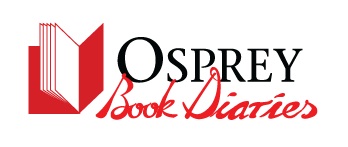
The Cutaway
The most challenging plate to do is the cutaway because of the volume of material shown in the plate. Regardless I love collecting the material for the cutaway. I think it is the model-maker in me. The cutaway is a two-dimensional model. In this book, the cutaway is of Ark Royal.
I start by getting plans for a featured ship. They do not need to be builder’s plans, although for my first New Vanguard I ordered a set of plans for the Constitution from the navy. They were originally prepared to help maintain the ship. (Today a version of these plans is available on CD.)
The builder’s plans turned out to be overkill. What works better are a set of exterior lines and an interior arrangements diagram. The lines drawings provide the geometry of the hull, while the interior arrangements diagrams give the artist an idea of where the rooms are. They are easier to interpret. I was fortunate enough to find just those items from a friendly librarian in Blyth.
That is just the starting point. You put together a list of 40 to 70 items which you would like to see illustrated in the cutaway. This is everything from the anchors and guns to the interior items such as the boiler room and steam engine. You cannot put everything in, so you pick the most interesting items. I tried to stick with stuff everyone would like, such as the guns, but I did stick in one or two wonky things. (Like the feedwater tank – hey, I got a degree in Naval Architecture back when steam was still important.)

Plan showing callouts
Now the fun part: find examples of everything you want illustrated in the plate.
Some of this is easy. There are many pictures of Ark Royal’s distinctive cranes. Ditto many of the items on the ship’s exterior. Others items are more difficult, but doable. I actually found a picture of the aircraft hangar hold of Ark Royal. But other stuff? That gets… challenging.

A two-fer, details of the crane and the hanger
One example – the ship’s engines and boilers. The plans I had showed the location of the engine room and boiler room, but not the layout of the items in the room. I could kind of, sort of figure that out (one advantage of a degree in Naval Architecture and living 20 miles from USS Texas, with its triple-expansion engine), but I still had to explain it to the artist.
I found museum ships with a steam plant and boiler setup similar to Ark Royal, and included images and plans of the relevant bits in the artist’s brief. I was even lucky enough to find plans for a similar triple-expansion steam engine in the Library of Congress. I also found pictures illustrating the layout in places like officers’ cabin, crew quarters, the wardroom, the pilothouse, the radio shack, and the emergency steering flat – even a galley stove from World War I.
Fortunately, the cutaway is not a scale model – just approximately works for all of these. And a clever artist (Osprey’s artists are clever) can use the hull structure to hide the stuff you really do not know about.
There was one problem though – I like to use period photos for objects to be illustrated. But color photography did not really appear until after World War I. The period pictures are black and white, but the cutaway plate is in color. There are lots of color images of the ship’s exterior and of the airplanes, but again, the interior is more challenging.

A WWI-era watercolor of the pilot house of a Royal Navy cruiser
I scraped up WWI-era artwork showing ships’ interiors. Plus, one Royal Navy World War I-era ship is left, HMS Caroline. Built in 1914 and a veteran of Jutland, the ship remained in the Royal Navy – largely unchanged internally from its World War I appearance – until 2011. Several articles were written about Caroline coming up on its centennial, and some were illustrated. In color! I pillaged those photos to add to the artist’s brief. Caroline certainly represented the standard colors used aboard a 1914 warship.
Next? Writing the text
| Previous: Battlescenes | Next: Writing the Book |


Comments
You must be logged in to comment on this post. Click here to log in.
Submit your comment